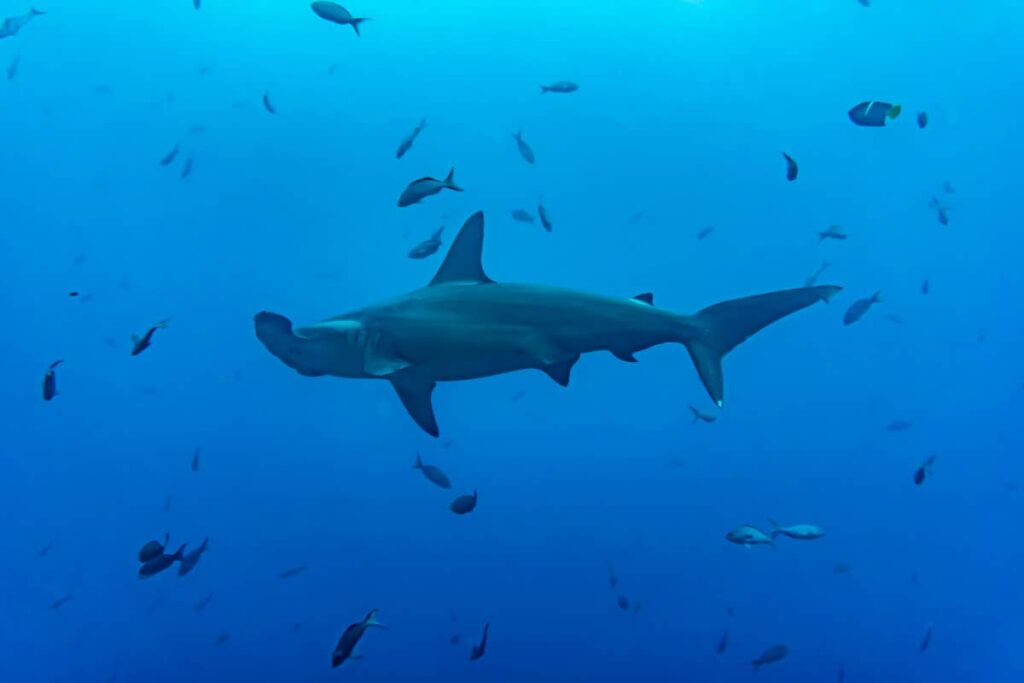Edge of the Archipelago: Diving Deep into Wolf Island’s Wild Frontier
Wolf Island, a remote volcanic remnant in the northern Galápagos, is a sanctuary for evolutionary marvels and underwater spectacles. Named after German geologist Theodor Wolf, this uninhabited island is renowned for its dramatic cliffs, thriving shark populations, and the infamous "vampire finch." As part of the Galápagos Marine Reserve and a UNESCO World Heritage Site, Wolf offers unparalleled diving experiences amid nutrient-rich currents, making it a magnet for advanced divers and conservation enthusiasts alike
Wolf Island Fast Facts
- Area: 1.3 km² (0.5 sq mi) – though some sources cite 2.85 km², likely including submerged volcanic structures.
- Elevation: 253 meters (830 ft) above sea level, the summit of an extinct volcano.
- UNESCO Protected: Part of the Galápagos World Heritage Site since 1978, with no terrestrial visitor access to protect its fragile ecosystem.
- Exclusive Access: Only accessible via liveaboard diving cruises; fewer than 1,000 visitors annually.
- Iconic Resident: The vampire finch (Geospiza difficilis septentrionalis), a blood-drinking subspecies found nowhere else.
Wolf Island Activity Highlights
- Dive El Derrumbe: Swim alongside schools of scalloped hammerhead sharks, Galápagos sharks, and occasional whale sharks.
- Shark Bay: Witness the planet’s highest shark biomass—up to 17.5 tons per hectare.
- Photograph Volcanic Landscapes: Capture stark lava formations and seabird colonies on the island’s cliffs.
- Birdwatch for Vampire Finches: Observe their unique blood-feeding behavior on Nazca and red-footed boobies.
- Spot Pelagic Giants: Encounter whale sharks, manta rays, and dolphins in open waters.

Wolf Island Animal Highlights
- Scalloped Hammerhead Sharks (Sphyrna lewini): Gather in schools of hundreds at dive sites like Shark Bay.
- Whale Sharks (Rhincodon typus): Filter-feeding giants, often seen June–November.
- Vampire Finches: Use sharp beaks to drink blood from boobies during dry seasons.
- Galápagos Sharks (Carcharhinus galapagensis): Apex predators patrolling underwater cliffs.
- Manta Rays (Mobula birostris): Glide through currents with wingspans up to 7 meters.
History
- Volcanic Origins: Formed 900,000–1.6 million years ago, Wolf is the southernmost island on the Wolf-Darwin Lineament, a volcanic ridge shaped by tectonic activity.
- Human Discovery: First visited via helicopter in 1964; named after Theodor Wolf, who mapped Galápagos geology in the 19th century.
- Conservation Milestone: Designated part of the Hermandad Marine Reserve in 2022, expanding protections for migratory species like whale sharks.
Geography
- Location: 160 km (100 mi.) northwest of Isabela Island, on the Nazca Plate boundary.
- Geology: Composed of plagioclase-rich basalts from extinct volcanic eruptions; features underwater caves and sheer cliffs.
- Marine Features: Part of the Cromwell Current, a nutrient-rich upwelling supporting diverse pelagic life.
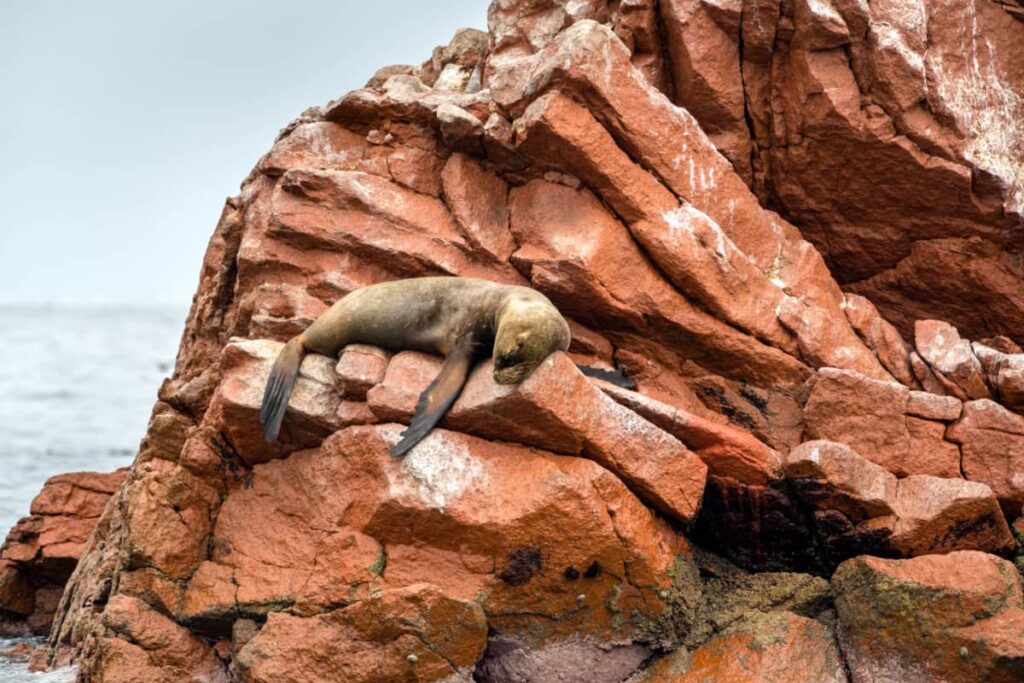
Getting to Wolf Island
- Liveaboard Cruises: The only way to visit. For example, you can book 8–10-day itineraries with 3–4 daily dives.
- Permits Required: Managed by the Galápagos National Park; visitors must have Advanced Open Water certification.
- From Mainland Ecuador: Fly to Baltra Airport, then embark from Santa Cruz or San Cristóbal.
Conservation Challenges
- Illegal Fishing: Despite patrols by a floating Park base, shark finning and tuna poaching threaten marine life.
- Climate Change: Warming seas disrupt nutrient cycles, impacting shark and seabird populations.
- Tourism Pressure: Unregulated dive boats risk damaging fragile ecosystems; strict visitor limits enforced.
Climate
- Dry Season (June–November): Cooler (18–24°C), strong currents, peak shark activity.
- Wet Season (December–May): Warmer (24–30°C), calmer seas, ideal for hammerhead sightings.
How to Visit Wolf Island
Wolf Island’s remoteness—160 km (100 miles) northwest of Isabela Island—and lack of airstrips or settlements make it one of the Galápagos’ most challenging destinations to reach. Accessible only by boat, the journey takes 12–15 hours from Santa Cruz through open ocean, with permits strictly limited to protect its fragile ecosystems. Below are your two main options:
Option 1: Liveaboard Diving Cruises
Best For: Advanced divers seeking structured itineraries and marine immersion.
Pros:
- Guaranteed Access: Only liveaboards can legally visit Wolf Island, with permits pre-arranged by operators like Galapagos Sky or Humboldt Explorer.
- Expert Guidance: Dive masters familiar with Wolf’s currents and wildlife lead 3–4 dives daily, including night dives.
- All-Inclusive: Meals, gear rental (including nitrox tanks), and accommodations bundled into prices
- Wildlife Focus: June–November itineraries prioritize whale shark encounters.
Cons:
- Limited Flexibility: Fixed schedules; no time for terrestrial exploration.Cost: Prices exceed most land-based Galápagos tours or typical cruises.
- Advanced Certification Required: Mandatory Advanced Open Water + 50+ logged dives.
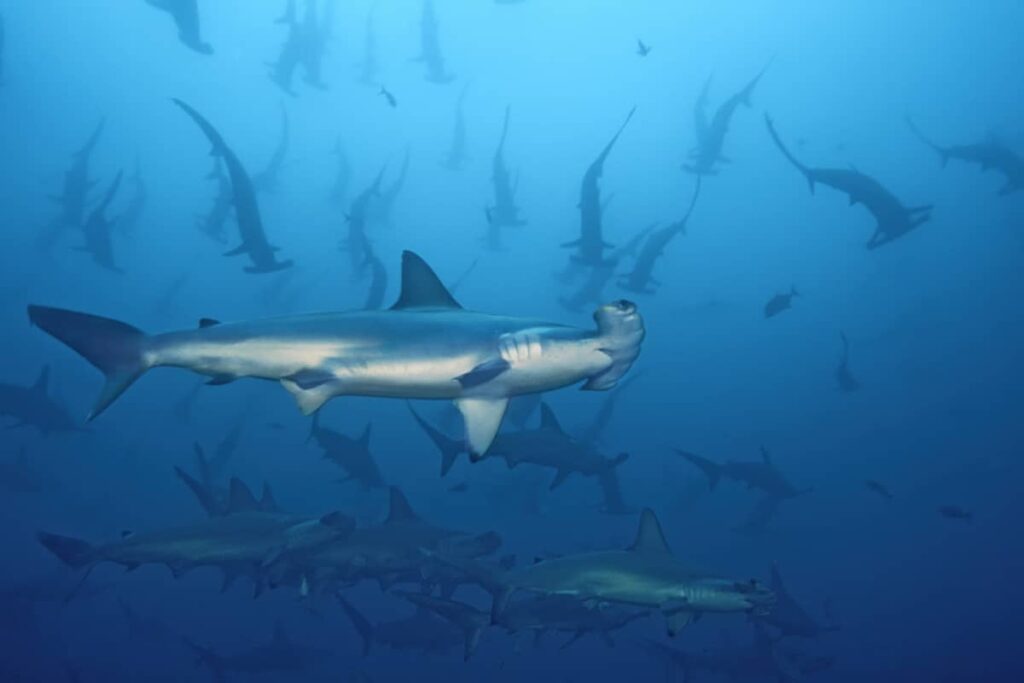
Option 2: Private Charters
Best For: Researchers, filmmakers, or small groups needing tailored access.
Pros:
- Custom Itineraries: Design dive schedules around shark migrations or vampire finch activity.
- Exclusivity: Avoid crowded dive boats; ideal for photographers or scientists.
- Extended Stays: Some charters permit 10–14 days vs. the standard 8-day liveaboard.
Cons:
- Even Higher Cost: Charters could be even pricier than liveaboards, especially if you don’t have a large group.
- Permit Complexity: Requires 6+ months’ notice and direct negotiation with the Galápagos National Park.
- Logistical Hurdles: Less operators offer charters to Wolf; most focus on easier-to-reach islands.
Why It’s Worth the Effort
Despite the challenges, Wolf Island rewards visitors with:
- Shark Densities: Up to 33 species in a single dive.
- Pristine Conditions: Zero coastal development or light pollution.
- Scientific Legacy: A living lab for studying shark migration and volcanic seamounts.
Activities & Experiences
Wolf Island is a pilgrimage site for serious divers, offering some of the planet’s most adrenaline-fueled underwater adventures. While terrestrial activities are restricted (no land visits permitted), the island compensates with unparalleled marine encounters. For a full breakdown of Wolf’s legendary dive sites, jump to our Top Dive Sites Near Wolf Island section.
1. Diving the Marine Wonderland
Highlights:
- Swim alongside schools of scalloped hammerheads (Sphyrna lewini) and Galápagos sharks (Carcharhinus galapagensis) patrolling volcanic walls.
- Explore underwater caves and lava tunnels teeming with marble rays (Taeniurops meyeni) and lobster colonies.
2. Whale Shark Snorkeling
Season: June–November
Highlights:
- Float alongside juvenile whale sharks (Rhincodon typus), their polka-dotted bodies filtering plankton near the surface.
- Capture their 10-meter frames with underwater cameras (red filters recommended).
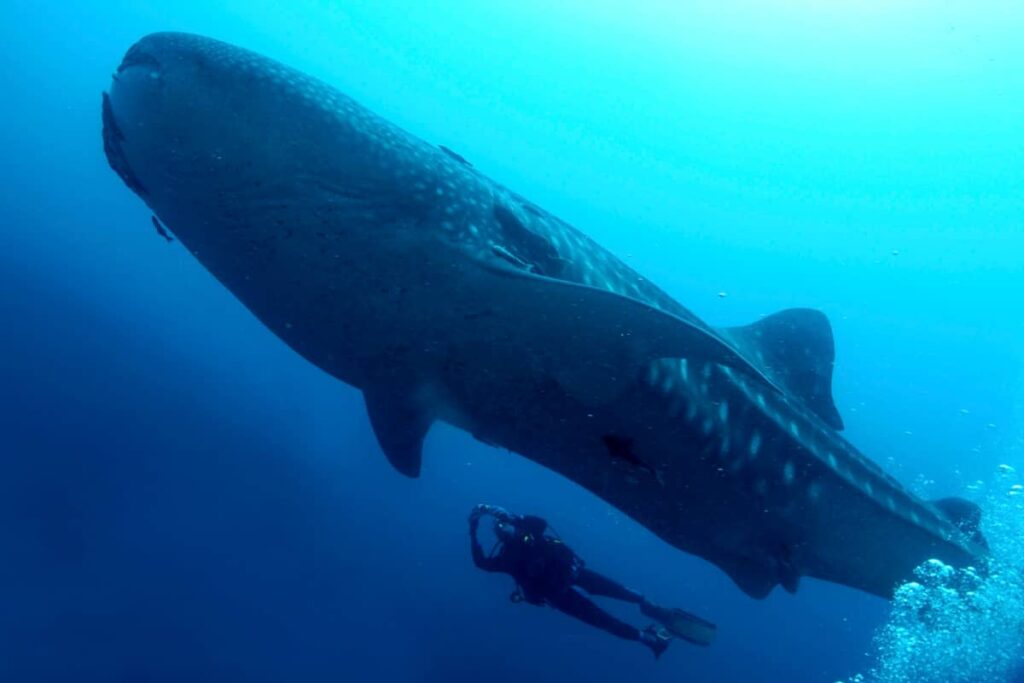
3. Night Dives
Depth: 10–20 meters (33–65 ft)
Highlights:
- Witness bioluminescent plankton igniting the water like submerged stars.
- Spot white-tip reef sharks (Triaenodon obesus) hunting in lava crevices.
4. Bird Photography (Boat-Based)
Key Species:
- Red-footed boobies (Sula sula): Nest on cliffs June–December, their turquoise feet contrasting against black lava.\
- Great frigatebirds (Fregata minor): Males inflate scarlet throat pouches in aerial courtship displays.
Limits: Shoot from zodiacs or cruise decks; no land access.
Why Non-Diving Activities Are Limited
- UNESCO Rules: No terrestrial tours to protect endemic species like the vampire finch (Geospiza difficilis septentrionalis).
- Volcanic Hazards: Sheer cliffs and unstable terrain make landings impossible.
- Marine Focus: 99% of Wolf’s magic lies beneath the waves.
Top Dive Sites Near Wolf Island
Wolf Island and its neighboring Darwin Island (often paired in dive itineraries) are legendary for their biodiversity and dramatic underwater topography. Below are the top dive sites in this remote marine wonderland:
El Derrumbe (Wolf Island)
Depth: 15–40 meters (50–130 ft)
Key Features: Collapsed volcanic wall.
Highlights: Schooling hammerheads (Sphyrna lewini), Galápagos sharks (Carcharhinus galapagensis), whale sharks (Rhincodon typus) June–November.
Conditions: Strong currents; Advanced Open Water certification required.
Shark Bay (Wolf Island)
Depth: 20–30 meters (65–100 ft)
Key Features: Highest shark biomass (17.5 tons/hectare).
Highlights: Hammerhead vortexes, manta rays (Mobula birostris).
Conditions: Thermoclines (18–24°C); drift diving recommended.
Darwin’s Arch (Darwin Island)
Depth: 10–30 meters (33–100 ft)
Key Features: Collapsed arch on Wolf-Darwin Lineament.
Highlights: Whale shark highway (June–November), bottlenose dolphins (Tursiops truncatus).
Conditions: Advanced divers only; unpredictable surges.
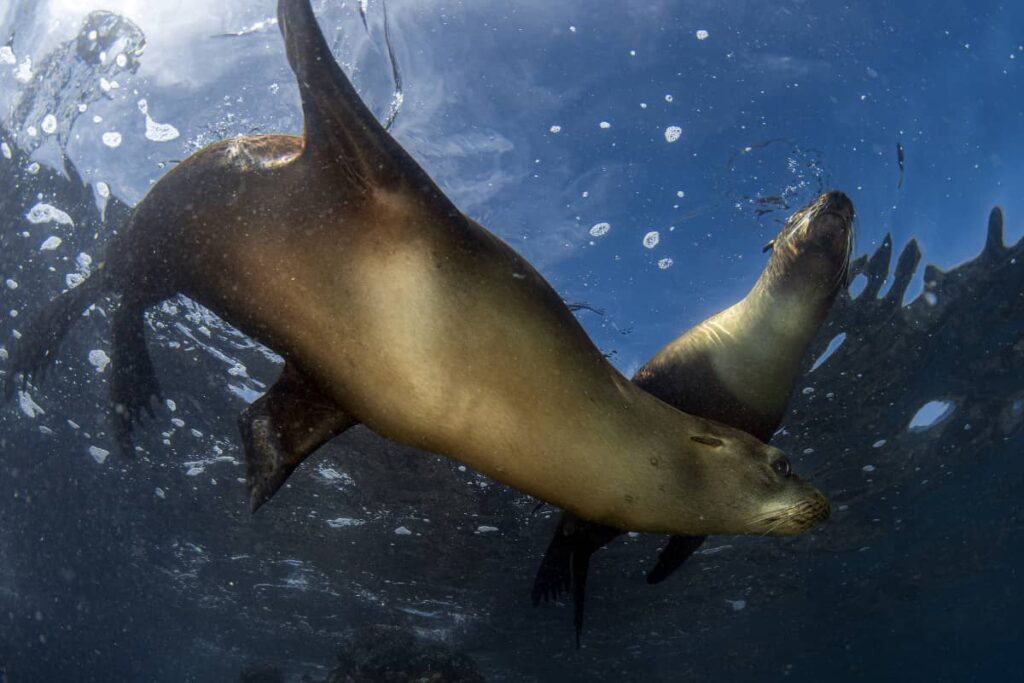
The Pinnacle (Wolf Island)
Depth: 12–35 meters (40–115 ft)
Key Features: Submerged volcanic spire.
Highlights: Big-eye trevallies (Caranx sexfasciatus), marble rays (Taeniurops meyeni).
Conditions: Strong downcurrents; adrenaline seekers only.
The Caves (Wolf Island)
Depth: 10–25 meters (33–82 ft)
Key Features: Ancient lava tunnels.
Highlights: White-tip reef sharks (Triaenodon obesus), spiny lobsters (Panulirus penicillatus).
Conditions: Calmer currents; intermediate-friendly.
Diving Tips for Wolf Island
- Certification: Advanced Open Water or equivalent required due to strong currents.
- Gear: Bring a reef hook, SMB (safety marker buoy), and underwater camera.
- Season: June–November for whale sharks; December–May for calmer seas.
- Safety: Dive with guides familiar with Wolf’s currents; never touch wildlife.
Animal Encounters
Mammals
- Galápagos Sea Lions (Zalophus wollebaeki): Playful companions during dives, often interacting with snorkelers and darting through underwater lava formations.
- Bottlenose Dolphins (Tursiops truncatus): Frequently spotted in open waters, riding bow waves or hunting fish schools near Shark Bay.
Birds
- Nazca Boobies (Sula granti): Nest on Wolf’s cliffs and serve as the primary blood source for the island’s infamous Vampire Finches.
- Red-footed Boobies (Sula sula): Recognizable by their bright turquoise feet, they roost in shrubs and dive for squid in nearby waters.
- Vampire Finches (Geospiza difficilis septentrionalis): Unique to Wolf Island, these finches pierce booby skin for blood and steal eggs during dry seasons.
- Waved Albatross (Phoebastria irrorata): Seasonal visitors (April–December) with 2.5-meter wingspans, gliding over the Cromwell Current.
Reptiles
- Marine Iguanas (Amblyrhynchus cristatus): The world’s only seafaring lizards, grazing on algae in tidal zones. Males turn red during mating season.
- Green Sea Turtles (Chelonia mydas): Often seen feeding in shallow reefs or gliding through strong currents near dive sites like El Derrumbe.
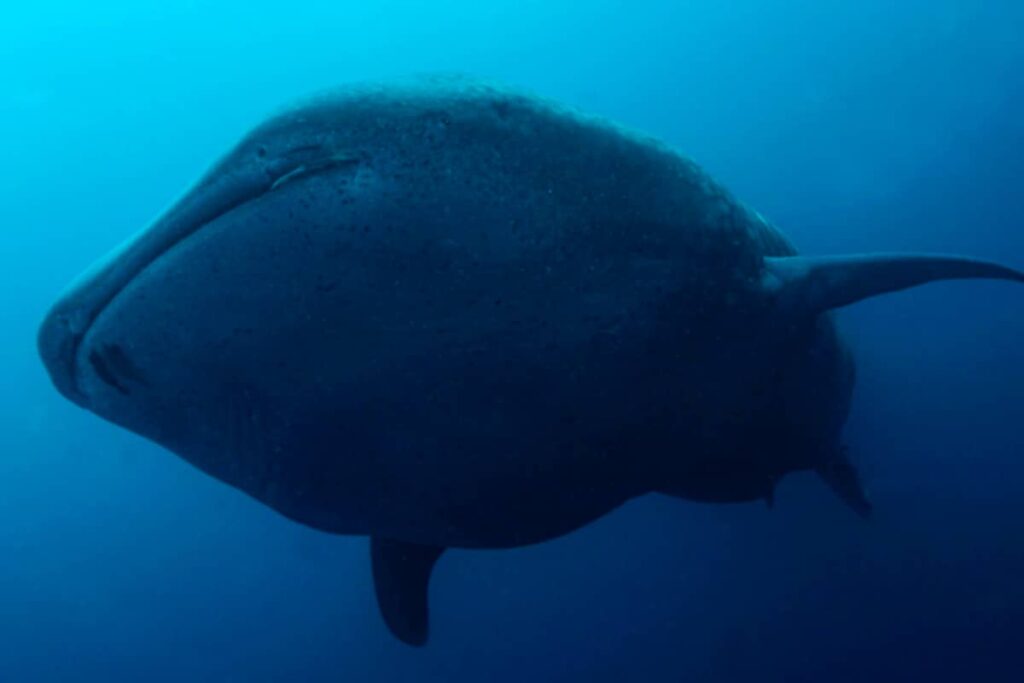
Fish & Pelagics
- Silky Sharks (Carcharhinus falciformis): Sleek, open-ocean predators patrolling Shark Bay’s depths in large schools.
- Whale Sharks (Rhincodon typus): Gentle filter-feeding giants, most abundant June–November. Juveniles frequent surface waters.
- Scalloped Hammerhead Sharks (Sphyrna lewini): Form vortexes of 200+ individuals at sites like The Landslide—Wolf’s signature spectacle.
- Galapagos Sharks (Carcharhinus galapagensis): Apex predators circling volcanic shelves, often alongside hammerheads.
- Tiger Sharks (Galeocerdo cuvier): Rare but thrilling sightings near deep drop-offs, especially during colder months.
- Spotted Eagle Rays (Aetobatus narinari): Glide in groups with distinctive white-spotted backs, common in sandy-bottomed areas.
- Golden Cownose Rays (Rhinoptera steindachneri): Golden-yellow rays forming synchronized schools in Shark Bay.
- Manta Rays (Mobula birostris): Majestic filter-feeders with 7-meter wingspans, often seen near nutrient-rich upwellings.
- Red-lipped Batfish (Ogcocephalus darwini): Bizarre bottom-dwellers with bright red lips, found on Wolf’s volcanic seafloor.
- King Angelfish (Holacanthus passer): Vibrant blue-and-orange fish darting through coral crevices.
- Yellow-tailed Surgeonfish (Prionurus laticlavius): Silver fish with venomous tail spines, forming large schools near reefs.
- Moray Eels (Muraenidae): Hidden in lava crevices, their gaping jaws are a common sight during drift dives.
- Galapagos Grunt (Orthopristis spp.): Endemic fish forming shimmering “bait balls” to confuse predators.
Travel Tips
- Permits: Secure through licensed operators; includes $200 Galápagos National Park fee. Click here for more information about updated National Park Fees.
- Gear: Bring a 7mm wetsuit for cold currents and UV-protective clothing.
- Health: No vaccines required, but dengue precautions advised.
Wrapping Up
Wolf Island is a testament to the Galápagos’ untamed beauty—a realm where volcanic forces and evolutionary ingenuity collide. From its blood-drinking finches to its shark-filled waters, Wolf challenges and enchants in equal measure. Ready to Dive In?
